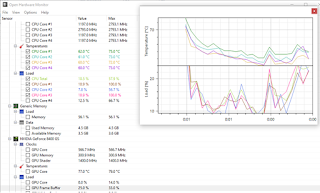Troubleshooting installation issues
Troubleshooting Installation Issues for Windows 11
Installing
Windows 11 can occasionally encounter issues, such as errors during
installation, driver incompatibility, or hardware limitations. Here is a
comprehensive troubleshooting guide to help you resolve common installation
problems.
1. "This PC Can’t Run Windows 11" Error
This
error usually occurs when certain system requirements, like TPM 2.0 or Secure
Boot, are not enabled.
Solution:
- Enable TPM and Secure Boot in BIOS/UEFI:
- Restart your PC and enter
the BIOS/UEFI menu (usually by pressing F2, F12, DEL,
or ESC).
- Look for TPM (Trusted
Platform Module) under Security settings and enable it.
- Enable Secure Boot
under the Boot section.
- Save changes and restart
your PC.
- Bypass TPM or Secure Boot Check (Not recommended for long-term use):
- Use the Registry Editor
to bypass TPM/Secure Boot checks. During installation, press Shift +
F10 to open the command prompt, then type:
reg add HKLM\SYSTEM\Setup\LabConfig /v BypassTPMCheck /t REG_DWORD /d 1 /f
reg add
HKLM\SYSTEM\Setup\LabConfig /v BypassSecureBootCheck /t REG_DWORD /d 1 /f
2. "We Couldn’t Install Windows 11" Error
This
error typically occurs when there’s insufficient disk space, incompatible
drivers, or corrupted installation files.
Solution:
- Free up disk space:
- Ensure your system drive
has at least 64 GB of free space.
- Use Disk Cleanup to
remove temporary files.
- Update drivers:
- Open Device Manager
and update any outdated or problematic drivers.
- Disable antivirus
temporarily during installation.
- Recreate installation media:
- Redownload the Windows 11
ISO and recreate the bootable USB drive using the Media
Creation Tool.
3. Black Screen or Infinite Loading Loop
A black
screen or loading loop may occur during or after installation due to
faulty drivers or hardware issues.
Solution:
- Disconnect external devices:
- Unplug non-essential
peripherals (printers, USB hubs, etc.) to avoid driver conflicts.
- Boot in Safe Mode:
- Restart the PC and press F8
repeatedly to enter Safe Mode.
- Update or roll back the
graphics driver in Device Manager.
- Check BIOS/UEFI settings:
- Ensure that UEFI is
enabled and that the installation drive is set as the primary boot
option.
4. Installation Freezes or Stops at a Percentage
This
issue can result from corrupted installation media, overheating, or
incompatible hardware.
Solution:
- Check the installation
media:
- Use a different USB
drive or recreate the installation media.
- Monitor your PC’s
temperature:
- Ensure the system is not
overheating during installation.
- Clean dust from fans and
use your PC in a well-ventilated area.
- Remove unnecessary drives:
- If multiple drives are
connected, try disconnecting non-essential ones.
5. Activation Problems After Installation
If
Windows 11 fails to activate, it could be due to license mismatches or server
delays.
Solution:
- Check the edition of
Windows:
- Ensure the edition you
installed (Home, Pro) matches your product key.
- Go to Settings → System → Activation and verify the edition.
- Run the Activation
Troubleshooter:
- Open Settings → System
→ Activation → Troubleshoot to fix activation issues.
- Microsoft Account
Activation:
- If your license is linked
to a Microsoft account, sign in with the same account.
6. Network Issues During Installation
If the
installation requires internet access but your network isn’t working, you’ll
encounter connection issues.
Solution:
- Use an Ethernet connection:
- If possible, switch from
Wi-Fi to a wired connection for better stability.
- Skip network setup
temporarily:
- If the installer allows,
select I don’t have internet and connect later.
- Update network drivers:
- After installation, update
Wi-Fi or Ethernet drivers from Device Manager.
7. Error Codes During Installation
Windows
11 may display various error codes, such as 0xC1900101 or 0x80070070.
Common Solutions:
- 0xC1900101 (Driver issue):
- Update drivers and disconnect external devices.
- 0x80070070 (Insufficient
storage):
- Free up space on the
installation drive.
- 0x80300024 (Partition
issue):
- Delete or format the target
partition using the installer.
8. Windows 11 Not Showing in Windows Update
If the Windows
Update does not offer the Windows 11 upgrade, it might be due to pending
updates or compatibility issues.
Solution:
- Install all pending updates:
- Go to Settings → Update
& Security → Windows Update → Check for updates.
- Use the Installation
Assistant:
- Visit the Microsoft
Windows 11 download page and use the Installation Assistant
for manual installation.
- Check for compatibility:
- Run the PC Health Check
Tool to ensure your PC meets the requirements.
9. Blue Screen of Death (BSOD) During Installation
A BSOD
may occur due to hardware faults, driver issues, or BIOS misconfigurations.
Solution:
- Check RAM and Storage:
- Run Windows Memory Diagnostic and chkdsk to ensure your hardware is working correctly.
- Update BIOS/UEFI:
- Check your motherboard
manufacturer’s website for BIOS updates.
- Disable Fast Boot:
- In the BIOS, disable Fast
Boot and try the installation again.
10. Installation Takes Too Long
If the
installation takes an unusually long time, it could indicate issues with your
hardware or network connection.
Solution:
- Check system performance:
- Ensure your drive is not fragmented
and disable unnecessary startup programs.
- Use a wired internet
connection:
- Slow Wi-Fi can delay the
download of updates during installation.
- Try a clean installation:
- If the upgrade process is
slow, consider performing a clean install using a USB drive.
Conclusion
These
troubleshooting steps should help you overcome most installation issues with
Windows 11. If problems persist, consider consulting Microsoft’s support
forums or contacting customer support. Preparing your system in
advance by checking hardware compatibility, updating drivers, and using stable
installation media will reduce the chances of encountering issues.





















